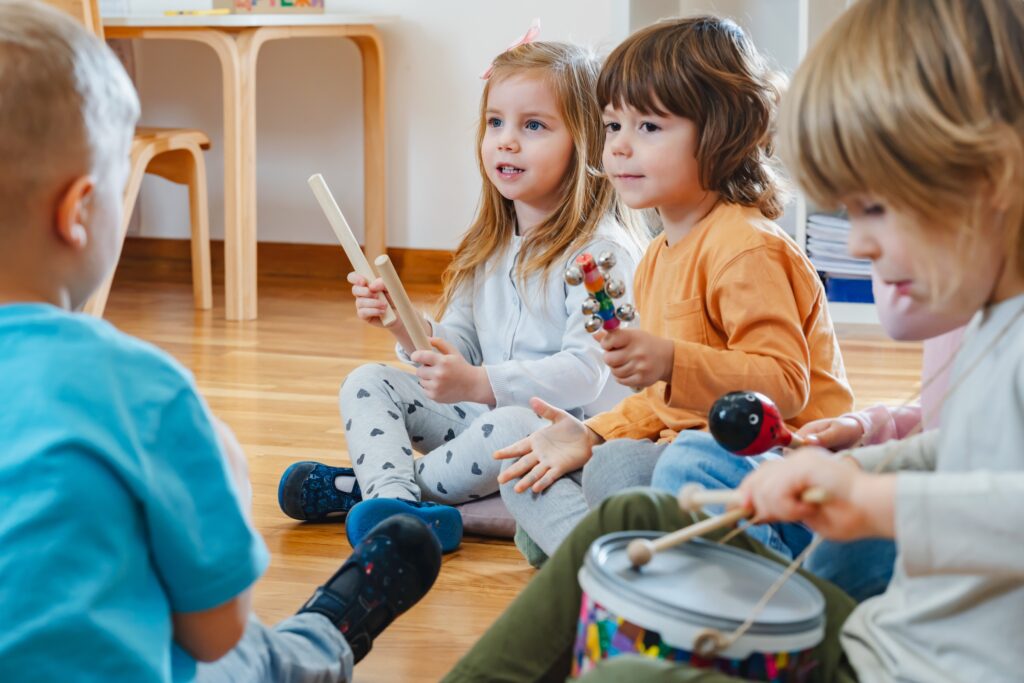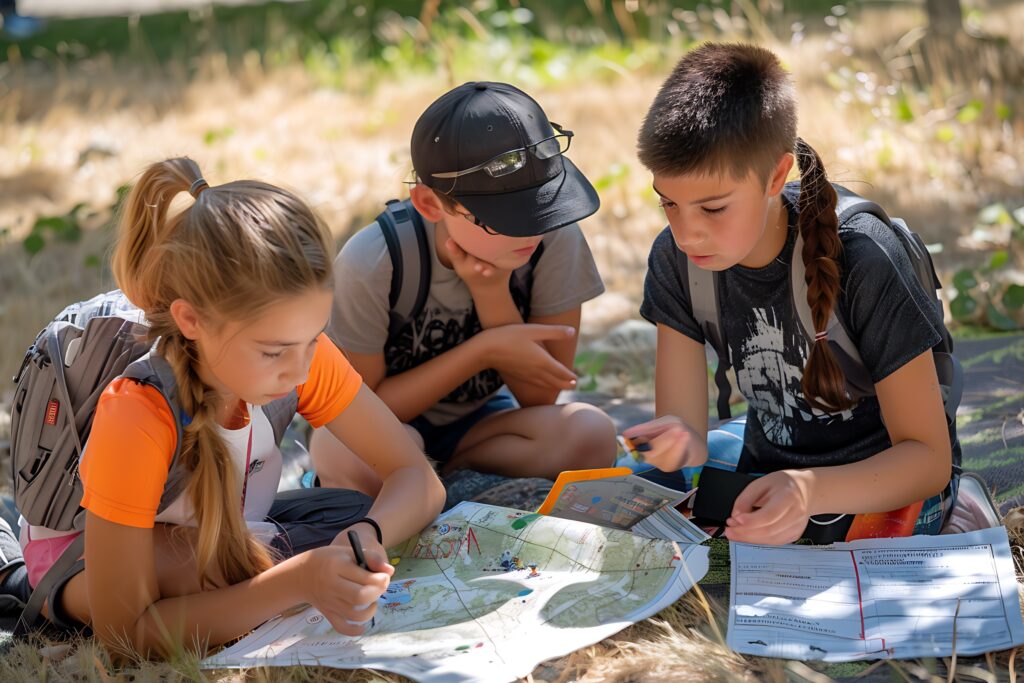One size fits all? Who decides how children learn?


A number of education departments are touting a return to ‘explicit teaching’. Media articles (such as this one) have presented images of teachers standing in front of a class group of 20 plus children and providing instruction on literacy and numeracy.
Bemused onlookers have commented, “Isn’t this just ‘teaching’? That’s how it looked when I was at school.”
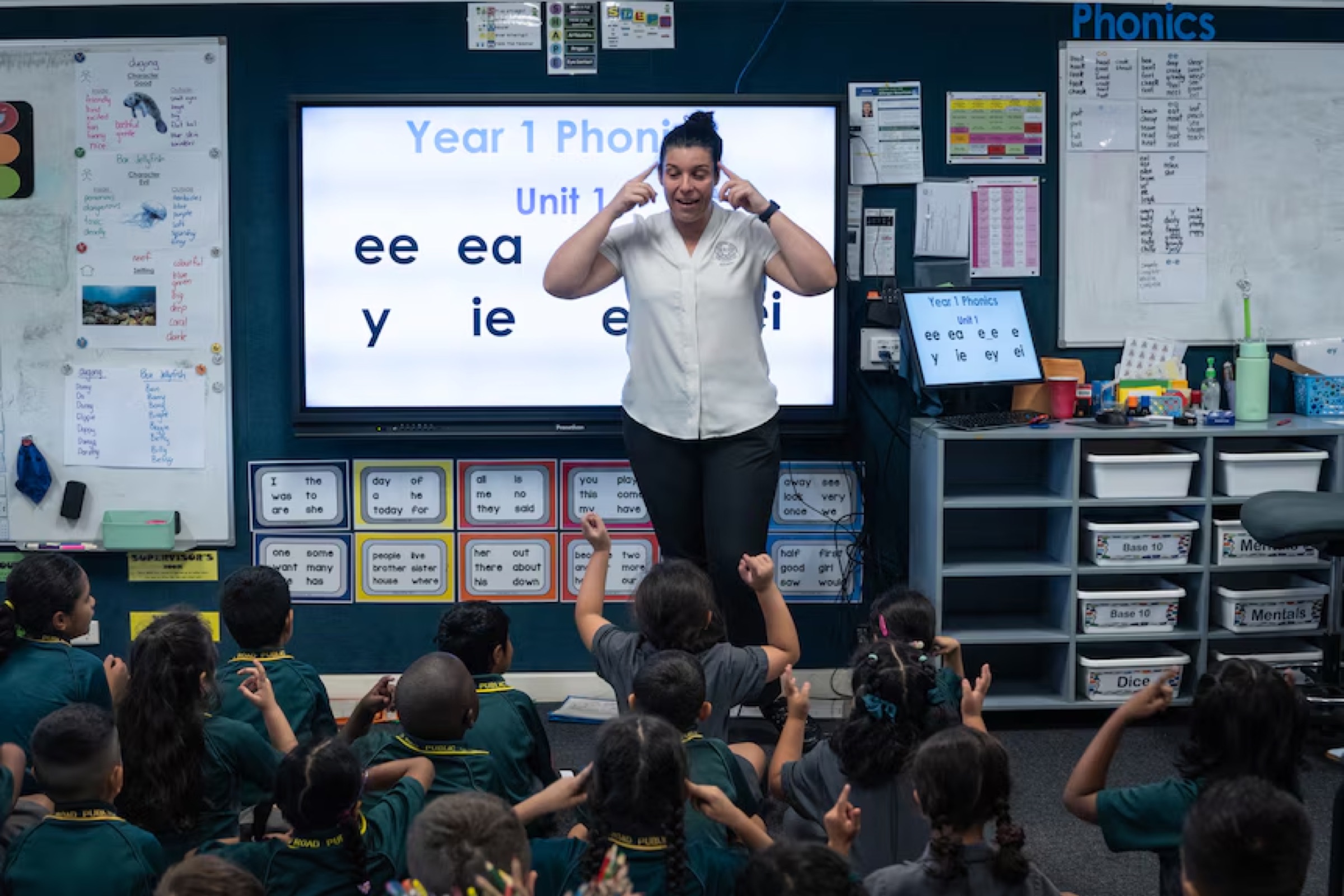
Explicit teaching has its detractors, bemoaning the potential loss of approaches that are supported by alternate research-based models, concerned that there will be a return to the ‘bad old days’. Some states are mandating teachers move to an explicit instruction model, including the removal of alternate teaching approaches.
But what is ‘explicit instruction’?
According to the AERO (Australian Education Research Organisation), it is defined as follows:
“Explicit instruction breaks down what students need to learn into smaller learning outcomes and models each step. It allows students to process new information more effectively.”
The benefits are described as preventing cognitive overload, effective across a variety of contexts and supporting memory through building connections with prior learning.
In short, explicit teaching/instruction is evidence-based. It has been shown to be effective in supporting children’s learning.
And Montessori is actually explicit instruction.
Any education official suggesting to remove Montessori programs as they don’t fit the explicit instruction model has not taken the time to understand the methodology. Montessori learning is bathed in a context of respect, responsibility, individuality and supporting the interests of children. Within this context, explicit teaching occurs – not in a whole-class based manner, but one-on-one, as children are ready.
Unpacking the definition of “explicit instruction”:
1. breaks down what students need to learn into smaller learning outcomes
Montessori: Each apparatus or learning experience is a discrete learning outcome presented with three-dimensional manipulatives that a child can explore, experiment, trial, self-correct and repeat until they feel satisfied. The child’s satisfaction is the signal that the concept is absorbed. Each material works with others in the curriculum to build the suite of learning outcomes required to accomplish larger learning.
2. models each step.
Montessori: Each ‘lesson’ is individually (or small group) presented by the teacher through a presentation or demonstration, effectively modelling each step of the process.
3. It allows students to process new information more effectively by connecting new learning to prior knowledge.
Montessori: Each material has direct aims which are the smaller learning outcomes from point one, but also has ‘indirect aims’ which prepare students for later learning. Additionally, the children are working from concrete materials to lay down an experience through the senses of touch, stereognostic experience and sight in their memories, which then provide a platform for abstract learning. The activities are described as ‘materialised abstractions’.
The Explicit Instruction model
The Explicit Instruction model has been represented in this way:
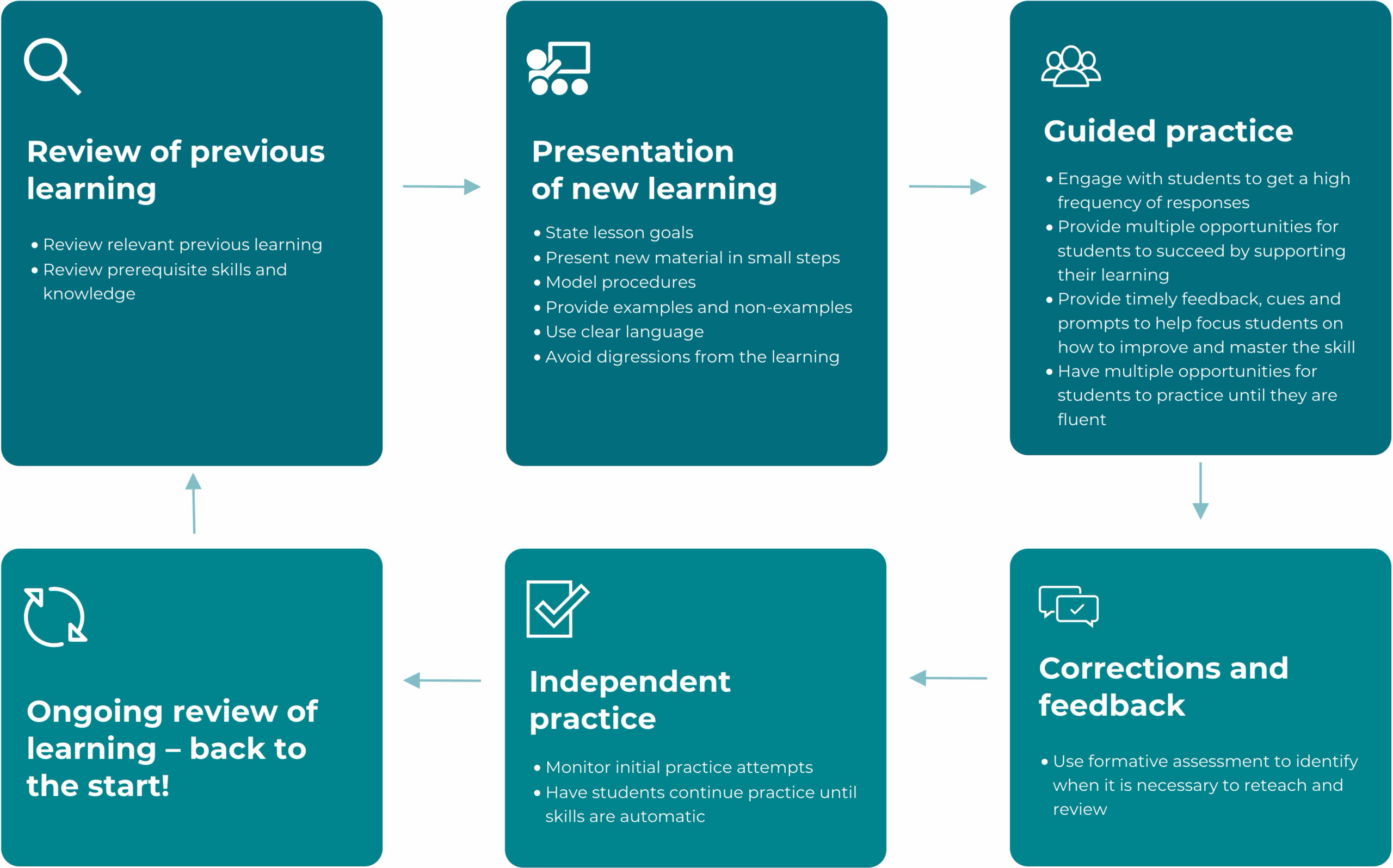
The Montessori process is not substantially different in process – this is my adaptation of the diagram above:
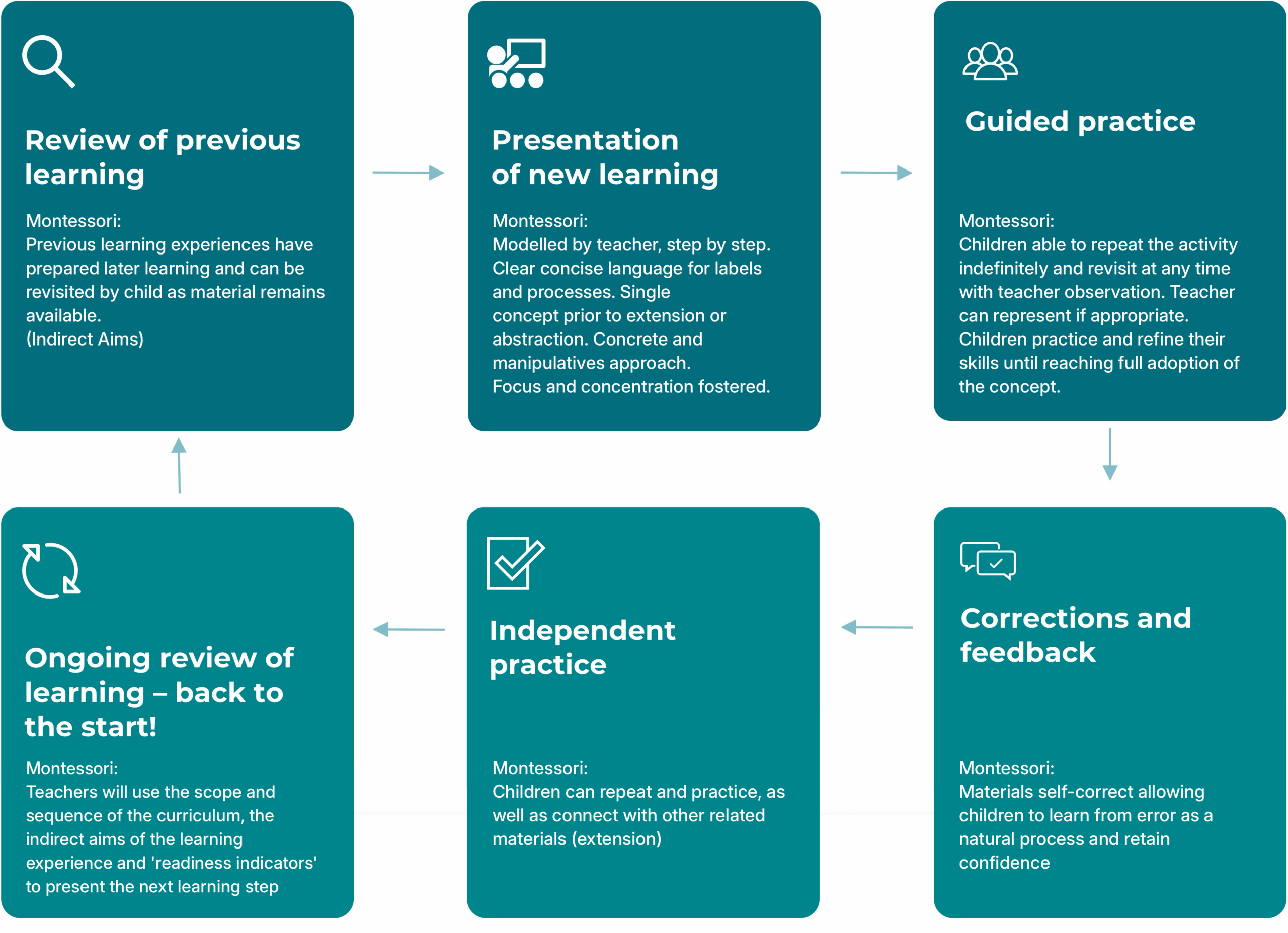
Explicit Instruction in action
Perhaps the misunderstanding about the Montessori approach can be attributed to the individualisation of the program. A widely held perception is that the whole class must be taught at the same time for effective curriculum strategy. When a teacher ‘covers’ digraphs in week 2 of term 2, that curriculum presentation can be ‘ticked off’ in bulk as having occurred. This is an administrative efficiency.
Montessori classrooms are individualised, providing for children to cover the curriculum according to their own developmental blueprint and as they are ready. The children still encounter, work with, and accomplish the curriculum in a way that they can absorb the learning effectively.
The progress of the curriculum can be shown in the following diagrams, with each ‘line’ representing an individual child across a term or a year:
Mainstream Schooling
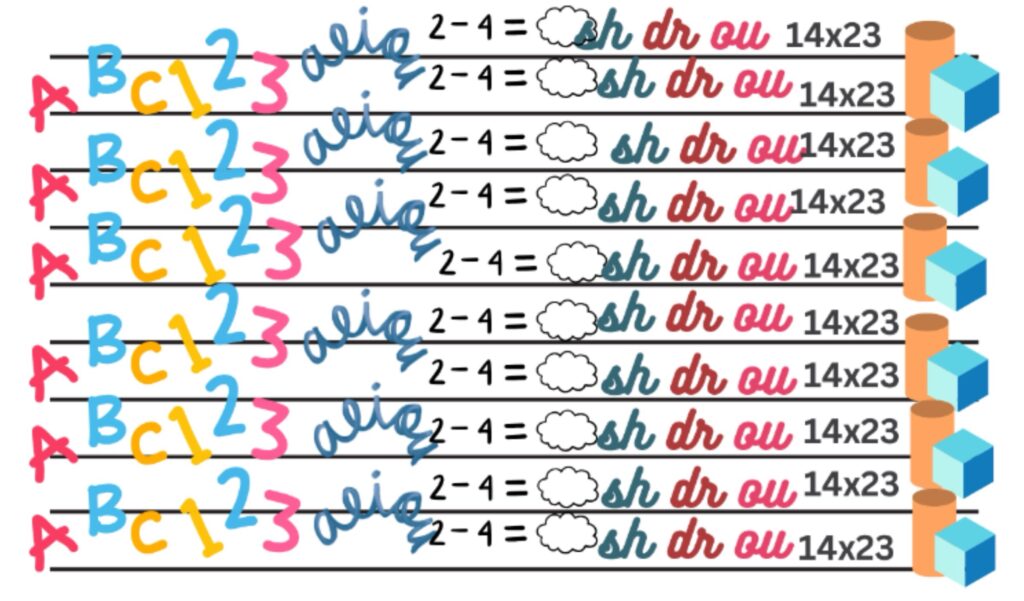
Montessori Schooling

Whilst the ‘whole class approach’ might appear easier to follow, and the Montessori diagram more haphazard, the outcomes for each child is better in the Montessori classroom. Montessori children develop concentration as they are less bored or lost in whole class lessons, and achieve a state of ‘flow’ more easily. These children maintain their curiosity about their world, and confidence in themselves as learners.
To sum up, it would be fair to identify the Montessori methodology as an “Individually Targeted Explicit Instruction” approach.
Helping children thrive is a shared journey. Spread the word and support fellow educators with insights and resources from Your Child’s Day.
Resources, advice, and uplifting stories for educators and families. No spam, ever.

